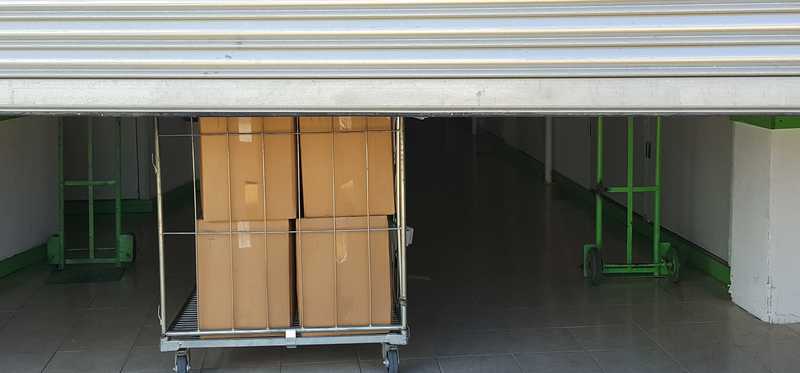10 Stocks With the Largest Dividends in the World

10 Stocks With the Largest Dividends in the World
Do sky-high dividends make these stocks buys?
Dividend-paying stocks historically outperform their non-dividend paying peers, but that doesn’t mean it’s smart to buy every dividend stock out there. In addition to knowing how much money a company returns to investors via dividends, it’s important to understand whether its sky-high dividend payments can continue.
For instance, the 10 following stocks pay the biggest quarterly dividends in the S&P 500. Does that make them worth owning in your portfolio?
Previous
Next

No. 1: BlackRock Inc. (NYSE: BLK) -- $2.88 per quarter
Vanguard may be the biggest money-manager of index funds, but BlackRock holds the crown as the biggest money-manager of exchange-traded funds, or ETFs.
Investors have been pouring trillions of dollars into ETFs since they were first introduced due their low fees, low minimum investments, high liquidity, and ability to add quick and easy diversification to a portfolio. That’s been a boon for BlackRock.BlackRock’s iShares ETFs manage over $1.7 trillion for investors, including $35 billion that flowed into them during Q1 2018 alone. When you include the money it manages for institutions, BlackRock’s assets under management exceeds $5.8 trillion.
When
you’re managing that much money, you don’t need to earn a lot in fees for it to
produce a lot of revenue, so it’s no shock that
BlackRock’s 2017 revenue was $12.5 billion. BlackRock’s bottom line has
benefited from the ETF boom, too: Its income was $5 billion last year.
Given those numbers, it's easy to see how BlackRock is able to pay $2.88 per share in quarterly dividends. That’s the biggest per-share quarterly payout in the S&P 500, and even better, it’s up nicely from the $2.50 quarterly dividend it paid in 2017.
Can those payments keep
coming? The odds look good. After all, BlackRock didn’t cut its dividend during
the Great Recession, and that suggests its dividend might survive a bear market
in the future, too.
Previous
Next

No. 2: Equinix (NASDAQ: EQIX) -- $2.28 per quarter
Managing data is getting increasingly complex, and as a result, demand for the data management solutions offered by Equinix is increasing.
Equinix helps companies connect their data to the internet and to each other through the data centers it operates. It's a global business, and its clients include mobile carriers such as Verizon and cloud providers including Amazon Web Services.
Digital trends such as the Internet of Things are generating more data than ever to manage, and businesses are increasingly outsourcing their networks. Those trends bode well for Equinix’s profitability, so the company's healthy $2.28 quarterly dividend payment looks safe.
Equinix's revenue has grown for 61 consecutive quarters through Q1 2018 -- a track record that’s unmatched by any other S&P 500 company.
As a realestate investment trust (REIT), Equinix is required to distribute at least 90% of its taxable income to investors every year, so with management expecting revenue to climb 17% in 2018 from $4.4 billion last year, there’s reason for optimism.
Previous
Next

No. 3: Lockheed Martin (NYSE: LMT) -- $2 per quarter
One of the country’s leading defense contractors, Lockheed Martin got 69% of its $51 billion in sales from the U.S. government last year.
The aeronautics division generates 39% of its sales, and its work on the F-35 joint strike fighter was responsible for 25% of total revenue last year.
The F-35 program has had some hitches, but demand for new fighters should provide a nice long term tailwind. Through 2017, the company had delivered 266 F-35s, yet its aircraft backlog was still valued at $35 billion. Ultimately, the U.S. government would like to have 2,456 combat aircraft, so if the F-35 proves itself, deliveries of it could be steady for years.
The big hiccup with defense contractors, though, is that defense spending is always subject to Congress’ whim. Despite that risk, Lockheed Martin’s $2 per share quarterly dividend is higher than all dividends paid out to investors back in 2006, so its dividend hasn’t been negatively impacted over the past 12 years by shifting administrations.
Previous
Next

No. 4: Public Storage (NYSE: PSA) -- $2 per quarter
An owner of self-storage facilities, Public Storage makes money by collecting lease payments on its storage units, which are typically rented on a month-to-month basis.
Public Storage owns or has interests in nearly 2,400 self-storage facilities in the U.S., totaling 159 million net rentable square feet, plus it has exposure to 223 storage facilities in Europe via a 49% equity stake in Shurgard. Additionally, it has a 42% equity interest in PS Business Parks, Inc. (NYSE: PSB), which owns about 28 million square feet of commercial real estate.
Public Storage’s quarterly dividend is $2 per
share, but management recently said Shurgard’s considering an IPO. Depending on
the details, an IPO could result in investors getting shares in Shurgard or a
bigger payment, so investors will want to keep an eye on what it decides to do.
ALSO READ: Public Storage: A Dividend Stock for the Next 50 Years
Previous
Next

No. 5: Simon Property Group (NYSE: SPG) -- $1.95 per quarter
An operator of premier shopping malls, including outlet centers, Simon Property Group is another top dividend stock that happens to be a REIT.
The REIT’s $1.95 quarterly payment is being supported by a portfolio that includes 206 income-producing properties in the U.S., including 68 properties operating under its Premium Outlets brand. It also has interests in Premium Outlets in Japan, Canada, Malaysia, and Mexico, as well as interests in Designer Outlets in Europe. Additionally, it owns a 21.1% stake in the publicly-traded French shopping center company, Klépierre SA.Simon’s
focus on premium malls helps insulate it against some of the risk of an
accelerating shift to online shopping (its occupancy rate is 94.6%), but the
bad news is that Simon’s not immune to the possibility of key tenants closing their
stores. For instance, the closure of Sears locations at its properties recently
is forcing it to explore new retail concepts to fill the vacated space, and ostensibly,
that’s because there are fewer anchor-size tenants interested in retail space.
The uncertainty of the retail business because of e-commerce might be enough to
keep income investors on the sidelines on this REIT.
Previous
Next

No. 6: Essex Property Trust (NYSE: ESS) -- $1.86 per quarter
In high-rent markets like Silicon Valley’s San Jose there’s a shortage of property and that’s been great news for Essex Property Trust, a multifamily apartment REIT that’s been around since the 1970s.
Essex Property Trust’s 247 operating apartment communities include more than 60,000 homes, and predominately, its communities are in southern California, San Francisco, and Seattle -- some of the country’s most desirable markets.
The REIT currently pays investors $1.86 quarterly for each share but there’s opportunity for that payout to increase.
It has seven projects comprising of nearly 2,000 new apartments in development, and because many of its properties are in metropolitan areas where home ownership is more expensive than renting, it should benefit from annual rent increases. For example, Essex expects same-property revenue will increase 2.7% in 2018.
Housing markets can be volatile, but I suspect home prices in Essex’ markets will continue to support renting and if I’m right, then the biggest threat to this company’s dividend is increasing costs on debt it takes on to acquire, build, or renovate properties.
Previous
Next

No. 7: Broadcom Ltd. (NASDAQ: AVGO) -- $1.75 per quarter
A maker of semiconductor chips that help devices communicate with each other and the Internet, Broadcom’s one of the few growth stocks on this list of top dividend payers.
Broadcom’s sales increased 19.6% to $5.01 billion in fiscal Q2 2018, and as a result, non-GAAP earnings per share improved 32.2% to $4.88 last quarter.
Its enterprise storage sales grew 63% to $1.16 billion last quarter while its wired infrastructure and wireless communication sales increased 9% year over year to $2.3 billion and 13% to $1.29 billion, respectively.
The solid performance provides more than enough financial flexibility for the company to pay a $1.75 quarterly dividend while also conducting a massive $12 billion share repurchase program.
Because the Internet of Things is connecting more devices and innovation at its customers, including Apple and Samsung, show no signs of stopping, I think income and growth investors could benefit from owning Broadcom’s shares in the future.Previous
Next

No. 8: Boeing (NYSE: BA) -- $1.71 per quarter
Boeing and Airbus effectively have a duopoly on the commercial aircraft industry, and as a result, Boeing’s sales have taken off thanks to growing demand from airlines eager to replace aging jets to lower fuel costs.
In Q1 2018 alone, Boeing delivered 184 planes, up 9% year over year, and its sales grew 6% to $23.4 billion.
Importantly, Boeing’s operating margin improved by over 2% last quarter to 12.3%. For perspective, annual operating margins spent most of the 2000s below 8%, so Boeing has become much leaner over the past decade.
The company paid out $1 billion in dividends in Q1, up 20% from the year prior, and with nearly $10 billion in cash and a $486 billion backlog, there’s good reason to expect that Boeing’s $1.71 quarterly payout can climb higher over time.ALSO READ: Boeing's Big Dividend Increase Delights Investors
Previous
Next

No. 9: Cintas (NASDAQ: CTAS) -- $1.62 per quarter
If you work in food service, hospitality, or healthcare and you wear a uniform, there’s a good chance you’re working for a company that relies on Cintas, the largest uniform renting and laundering company.
Cintas makes most of its money on uniforms, but it also sells other products, including floor cleaning and restroom supplies, and services, including first aid and safety and floor cleaning services. Nationwide, it has 400 facilities, including six manufacturing plants and eight distribution centers.
Its not a sexy business, but it’s a dividend-friendly business to be in. For example, in its fiscal Q3 of 2018, Cintas organic sales, not including acquisitions, grew 7.8% to $1.59 billion and it generated over $300 million in profit.
The company’s dividend yield is only 0.85%, though, so income investors will need to keep that in mind. Also, the company bought its fourth-largest competitor for $2.2 billion in 2016 and it can sometimes take a while for big deals like that to pay off.Previous
Next

No. 10: International Business Machines (NYSE: IBM)
A drop off in demand for its legacy networking products has made it tough-going for IBM, and although it’s refocused on cloud-based services, it’s so far been unable to fully offset slowing sales and get itself back to growth.
Perhaps, this will be the year that sales bottom, though. After adjusting for the positive impact of converting sales overseas back into U.S. dollars, its $19 billion in first-quarter revenue was roughly flat versus one year ago, and its $2.45 in earnings per share was $0.06 per share better than expectations.
IBM’s
performance isn’t anything to write home about, but cloud revenue did improve
by 20% in the past year and its “strategic imperatives” segment, which now
represents 47% of sales, did grow by 12%.
Nevertheless,
that performance wasn’t good enough to convince Warren Buffett to stick around.
Once-upon-a-time, IBM was one of Berkshire Hathaway’s biggest holdings, but
Buffett sold the last of his IBM shares earlier this year.
If you think IBM can turn itself around, then IBM’s $1.57 per share quarterly dividend is compelling, particularly since it translates into a market-beating 4.4% dividend yield.
Previous
Next

One final thought
Income from dividends can help protect investors during bear markets, but they’re unlikely to fully offset any decline in share prices. For this reason, investing in high-quality companies for the long-haul, regardless of the size of their dividend, is probably best.
John Mackey, CEO of Whole Foods Market, an Amazon subsidiary, is a member of The Motley Fool’s board of directors. Todd Campbell owns shares of Amazon and Apple. The Motley Fool owns shares of and recommends Amazon, Apple, and Equinix. The Motley Fool owns shares of Verizon Communications and has the following options: long January 2020 $150 calls on Apple and short January 2020 $155 calls on Apple. The Motley Fool recommends Broadcom Ltd and Cintas. The Motley Fool has a disclosure policy.
Previous
Next
Invest Smarter with The Motley Fool
Join Over Half a Million Premium Members Receiving…
- New Stock Picks Each Month
- Detailed Analysis of Companies
- Model Portfolios
- Live Streaming During Market Hours
- And Much More
READ MORE
HOW THE MOTLEY FOOL CAN HELP YOU
-
Premium Investing Guidance
Market beating stocks from our award-winning service
-
The Daily Upside Newsletter
Investment news and high-quality insights delivered straight to your inbox
-
Get Started Investing
You can do it. Successful investing in just a few steps
-
Win at Retirement
Secrets and strategies for the post-work life you want.
-
Find a Broker
Find the right brokerage account for you.
-
Listen to our Podcasts
Hear our experts take on stocks, the market, and how to invest.
Premium Investing Services
Invest better with The Motley Fool. Get stock recommendations, portfolio guidance, and more from The Motley Fool's premium services.